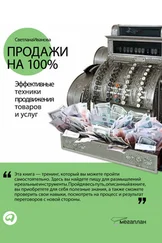14. Morin, C. (2014). The neurophysiological effect of emotional ads on the brains of late adolescents and young adults Media Psychology . 104. Santa Barbara: Fielding Graduate University.
15. Ehrlich, B. (2015). Guys: Here’s why it’s dumb not to give your girl a gift on Valentine’s Day. MTV News , 9 February. Available from: http://www.mtv.com/news/2074362/valentines-day-presents-chocolates-study/.
16. Dehaene, S. (2014). Consciousness and the Brain: Deciphering How the Brain Codes Our Thoughts , 352. New York: Penguin Books.
17. Mendes, W.B. (2009). Assessing autonomic nervous system activity. In: Methods in Social Neuroscience (ed. E. Harmon-Jones and J.S. Beer), 118–147. New York: Guilford Press.
18. Bechara, A., Damasio, H., Tranel, D. et al. (1997). Deciding advantageously before knowing the advantageous strategy. Science , 275 (5304): 1293–1295.
19. Ravaja,N. (2004).Contributions of psychophysiology to media research: Review and recommendations. Media Psychology 6 (2): 193–235.
20. Hebb, D. O. (1949). The Organization of Behavior , 423. New York: Wiley.
21. Gazzaniga, M. S., Ivry, R. B., and Mangun, G.R. (2009). Cognitive Neuroscience: The Biology of the Mind , 3rd ed., 752. New York: W.W. Norton.
22. DeYoung, C.G. and Gray, J.R. (2009). Personality neuroscience: Explaining individual differences in affect, behavior, and cognition. In: Cambridge Handbook of Personality (ed. P.J.C.G. Matthews), 323–346. New York: Cambridge University Press.
23. Lesica, N. and Stanley, B. (2004). Encoding of natural scene movies bytonic and burst spikes in the lateral geniculate nucleus. Journal of Neuroscience 24 (47): 10731–10740.
24. Kolb, B. and Whishaw, I. Q. (2009). Fundamentals of Human Neuropsychology , 6e, 920. New York: Worth Publishers.
25. Berridge, K.C. (2004). Motivation concepts in behavioral neuroscience. Physiology & Behavior , 81 (2): 179–209.
26. Darwin, C. (1872). The Expression of the Emotions in Man and Animals . London, England: John Murray.
27. Ekman, P. and Friesen,W. V. (1971).Constants across cultures in the face and emotion. Journal of Personality and Social Psychology 17 (2): 124–129.
28. PBS (2002). The Secret Life of the Brain. PBS documentary series.
29. McGaugh, J. (2000). Memory: A century of consolidation. Science 287 (5451): 248–251.
30. Ornstein, R. (1991). The Evolution of Consciousness: Of Darwin, Freud, and Cranial Fire: The Origins of the Way We Think , 326. New York: Simon & Schuster.
31. Panksepp, J. (2004). Affective consciousness: Core emotional feelings in animals and humans. Consciousness and Cognition 14 (1): 30–80.
32. Carlson, N.R. (2007). Physiology of Behavior , 9e, 768.Boston, MA: Pearson Education.
33. Wallbott, H. G. and Scherer, K. R. (1986). How universal and specific is emotional experience? Evidence from 27 countries on five continents. Social Science Information 25 (4): 763–795.
34. DeYoung, C.G., Hirsh, J.B., Shane, M.S. et al. (2010). Testing predictions from personality neuroscience: Brain structure and the Big Five. Psychological Science 21(6): 820–828.
35. Glimcher, P.W. (2009). Neuroeconomics: Decision-Making and the Brain , 556. London, UK: Elsevier.
36. Langleben, D.D., Loughead, J.W., Ruparel, K. et al. (2009). Reduced prefrontal and temporal processing and recall of high “sensation value” ads. Neuroimage 46 (1): 219–225.
37. Tamietto, M., Cauda, F., Corazzini, L.L. et al. (2010). Collicular vision guides nonconscious behavior. Journal of Cognitive Neuroscience 22 (5): 888–902.
38. Plutchik, R. (1991). The Emotions , 236., Lanham, MD: University Press of America.
39. Panksepp, J. (1998). The Foundations of Human and Animal Emotions , 481. New York: Oxford University Press.
40. Hess, U. (2009). Facial EMG.In: Methods in Social Neuroscience (ed. E. Harmon-Jones and J.S. Beer), 70–91. New York: Guilford Press.
41. Knutson, B., Rick, S., Wimmer, G.E. et al. (2007). Neural predictors of purchases. Neuron 53 (1): 147–156.
42. Hare, T. A., O’Doherty, J., Camerer, C.F. et al. (2008). Dissociating the role of the orbitofrontal cortex and the striatum in the computationof goal values and prediction error. Journal of Neuroscience 28 (22): 5623–5630.
43. Rossiter, J. R. and Silberstein, R. B. (2001). Brain-imaging detection of visual scene encoding in long-term memory for TV commercials. Journalof Advertising Research 41 (2): 13–21.
44. Tusche, A., Bode, S., and Haynes, J. D. (2010). Neural responses to unattended products predict later consumer choices. Journal of Neuroscience 30 (23): 8024–8031.
45. Draganski, B., Gaser, C., Kempermann, G. et al. (2006). Temporal and spatial dynamics of brain structure changes during extensive learning. Journal of Neuroscience 26 (23): 6314–6317.
46. Maguire, E.A.,Woollett, K., and Spiers, H.J. (2006). London taxi drivers and bus drivers: A structural MRI and neuropsychological analysis. Hippocampus 16 (12): 1091–1101.
47. Mercer, A., Deane, C., and McGeeney K. (2016). Why 2016 election pollsmissed their mark . Washington, DC: Pew Research Center.
48. Schneider, J. and Hall, J. (2011). Why most product launches fail. Harvard Business Review (April).
49. Morin, C. (2015). Why emotional PSA affect the brains of adolescents differently than the brains of young adults. In: Digital Citizenship in the 21st Century Monograph (ed. J. Ohler). Santa Barbara: Fielding Graduate University.
50. Randolph, W. and Viswanath, K. (2004). Lessons learned from public health mass media campaigns: Marketing health in a crowded media world. Annual Review of Public Health 25: 419–437.
51. Petty, R.E., Cacioppo, J.T., and Heesacker, M. (1981). Effects of rhethorical questions on persuasion: A cognitive response analysis. Journalof Personality and Social Psychology 40 (3): 432–440.
52. Brehm, S. and Brehm, J. (1981). Psychological Reactance: A Theory of Freedomand Control , 447. New York: Academic Press.
53. Grandpre, J., Alvaro, E. M., Burgoon, M. et al. (2003). Adolescent reactance and anti-smoking campaigns: A theoretical approach. Health Communication 15 (3): 349–366.
54. Farrelly, M. C., Healton, C. G., Davis, K. C. et al. (2002). Getting to the truth: Evaluating national tobacco countermarketing campaigns. American Journal of Public Health 92 (6): 901–907.
55. Rothman, A. J., Martino, S. C., Bedell, B. T. et al. (1999). The systematic influence of gain- and loss-framed messages on interest in and use of different types of health behavior. Personality and Social Psychology Bulletin 25 (11): 1355–1369.
56. Detweiler, J.B., Bedell, B.T., Salovey, P. et al. (1999). Message framing and sunscreen use: Gain-framed messages motivate beach-goers. Health Psychology 18 (2): 189–196.
57. Schneider, T.R., Salovey, P., Pallonen, U. et al. (2001). Visual and auditory message framing effects on tobacco smoking. Journal of AppliedSocial Psychology 31 (4): 667–682.
58. Schneider, T.R., Salovey, P., Apanovitch, A.M. et al. (2001). The effects of message framing and ethnic targeting on mammography use among low-income women. Health Psychology 20 (4): 256–266.
59. Lang, A. (2000). The limited capacity model of mediated message processing. Journal of Communication 50 (1): 46–70.
60. Lang, A., Zhou, S., Schwartz, N. et al. (2000). The effects of edits on arousal, attention, and memory for television messages: When an edit is an edit can an edit be too much? Journal of Broadcasting & Electronic Media 44 (1): 94–109.
Читать дальше
Конец ознакомительного отрывка
Купить книгу











